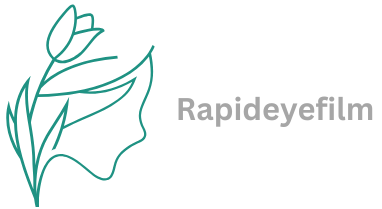Table of Contents
ToggleIn a world where knowledge is power, why should it come with a hefty price tag? Enter open educational resources (OER), the superhero of learning materials that’s swooping in to save students and educators alike from the clutches of overpriced textbooks. Imagine a treasure trove of free, high-quality resources just waiting to be explored—no cape required!
Overview of Open Educational Resources
Open Educational Resources (OER) comprise diverse materials designed for teaching, learning, and research. These resources include textbooks, lecture notes, videos, and simulations, all available at no cost to users. Institutions and creators often release OER under licenses that permit unrestricted access, distribution, and modification, fostering collaborative educational practices.
OER reflects a commitment to equalizing educational opportunities. They help address the significant barrier of high textbook costs, with studies showing that students can save hundreds of dollars each semester by using these resources. An estimated 80% of college students express concern over textbook affordability, highlighting the importance of readily available alternatives.
OER promotes active learning. Educators can tailor these resources to suit specific course needs, enhancing curriculum relevance. Collaboration among instructors leads to improved course designs, benefiting students across diverse learning environments.
Engagement with OER extends beyond traditional educational settings. Organizations and communities use these resources to promote lifelong learning, creating opportunities for skill development. Global initiatives support OER adoption, building an interconnected educational ecosystem that values resource sharing.
Research indicates that OER utilization can lead to higher student performance. Studies show that students using OER often demonstrate similar or improved learning outcomes compared to those who engage with traditional materials. Effective integration into curricula contributes to innovative teaching methods that cater to varied learning styles.
Taking advantage of OER facilitates a shift toward inclusive and accessible education. Schools, colleges, and universities increasingly adopt these materials, realizing their potential to reduce financial strain. By leveraging open resources, educators innovate and improve the overall learning experience for all students.
Benefits of Open Educational Resources
Open educational resources (OER) provide significant advantages, making education more inclusive and affordable. Institutions and learners benefit greatly from these resources.
Accessibility for All Learners
Accessibility defines OER. Resources are available without cost, ensuring everyone can engage with them. They often include various formats such as videos, written materials, and interactive tools. Educators can modify these resources to better fit diverse learning needs. This flexibility promotes inclusive education, allowing students with different abilities and backgrounds to access quality materials. Approximately 80% of college students express concerns about textbook affordability, highlighting the importance of accessible resources. With OER, barriers decrease, facilitating broader participation in educational opportunities.
Cost-Effective Alternatives to Traditional Resources
Cost-effectiveness stands out as one of the main benefits of OER. Students save substantial amounts of money when opting for these resources. Research indicates that the average student can save up to $1,200 per year by choosing OER over traditional textbooks. In a climate where textbook prices can exceed $200 each, OER offers a viable alternative. Schools and institutions benefit too, as adopting these resources can reduce overall spending on educational materials. By minimizing financial burdens, OER enhances accessibility and encourages a more equitable learning environment for all learners.
Challenges in Implementing Open Educational Resources
Implementing open educational resources (OER) comes with several challenges that institutions and educators must navigate. Quality assurance remains a significant concern, as the vast array of freely available materials varies widely. Many resources lack formal review processes, leading to inconsistently high quality. Accessibility standards often aren’t met, potentially hindering some students. Institutions may struggle to establish robust evaluation criteria for OER, which can create confusion about which materials are suitable for use.
Technical barriers can inhibit user engagement with OER. Many educators face difficulties integrating these resources into existing learning management systems. A lack of technical support often leaves users feeling overwhelmed when adapting and modifying materials. Variances in technological literacy among faculty members can also pose challenges, as not every instructor possesses the skills required to leverage OER effectively. Moreover, reliance on internet access can exclude students in under-resourced areas, further complicating efforts to implement OER widely.
Successful Case Studies
Open educational resources (OER) are making significant strides in various educational settings. Numerous institutions are embracing OER to enhance learning while reducing costs.
Institutions Leveraging Open Educational Resources
Community colleges, universities, and K-12 schools are increasingly adopting OER. For instance, the California State University system has integrated OER across many courses, resulting in substantial student savings. Miami Dade College reported over $6 million in savings due to its OER initiatives. These institutions focus on promoting collaborative content development, improving access to quality materials. Faculty members are developing customized resources to meet course requirements. Collaborative efforts among educators create a rich repository of materials that aligns with student needs.
Impact on Student Learning Outcomes
Students using OER often achieve remarkable results compared to those using traditional textbooks. Research highlights that over 70% of students found OER materials improved their learning experience. Higher engagement levels and better understanding of course content are common outcomes. Additionally, OER use contributes to increased course completion rates. As educators tailor resources to diverse learning styles, learning becomes more effective. Enhanced accessibility also plays a crucial role, allowing students from various backgrounds to thrive academically. This growing trend demonstrates its potential to transform educational landscapes.
Future Trends in Open Educational Resources
The future of open educational resources (OER) promises significant advancements in accessibility and engagement. Data suggests a continuous rise in the integration of OER within various educational frameworks, emphasizing a shift toward personalized learning experiences. Many institutions are focusing on collaborative content development, ensuring that resources reflect diverse perspectives and meet various learning needs.
Innovative technologies play a crucial role in the evolution of OER. Artificial intelligence and machine learning applications create adaptive learning environments, tailoring resources to individual student requirements. Such advancements help educators enhance their curricula, making OER a vital component of modern teaching strategies.
Increased partnerships between educational institutions and OER providers support sustainability and growth. Colleges and universities foster collaboration to develop high-quality materials, addressing existing quality assurance concerns. Research indicates ongoing efforts to establish standardized evaluation metrics, enhancing the reliability of OER offerings.
Global initiatives also drive the movement toward open education. Organizations like UNESCO promote OER adoption to improve educational equity across regions. Increased awareness of the benefits of OER contributes to a broader acceptance among educators and policymakers alike.
Emphasizing data-driven decision-making will guide institutions in evaluating the effectiveness of OER. Continuous assessment leads to improvements in resource quality and user satisfaction. Enhanced analytics tools provide insights into student engagement and learning outcomes, allowing for informed adjustments in resource deployment.
Demands for professional development in OER integration exist among educators. Access to training programs helps faculty navigate the complexities of incorporating OER into their teaching. As a result, more educators feel prepared to utilize these resources, driving further innovation in the teaching landscape.
Open educational resources represent a significant shift in how education is accessed and delivered. By breaking down financial barriers and promoting inclusivity, OER empowers both students and educators to engage in more effective learning experiences. The flexibility and adaptability of these resources foster innovative teaching methods that cater to diverse learning styles.
As institutions continue to embrace OER, the potential for enhanced educational equity grows. With ongoing advancements in technology and collaborative practices, the future of OER looks promising. This movement not only transforms the educational landscape but also ensures that quality learning materials are available to everyone, regardless of their financial situation.




